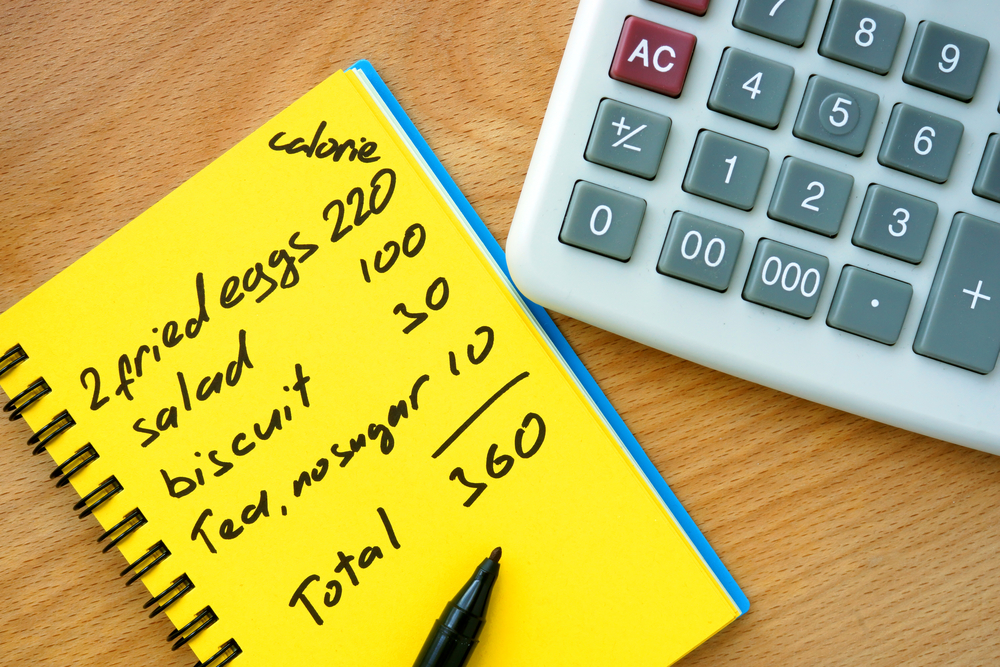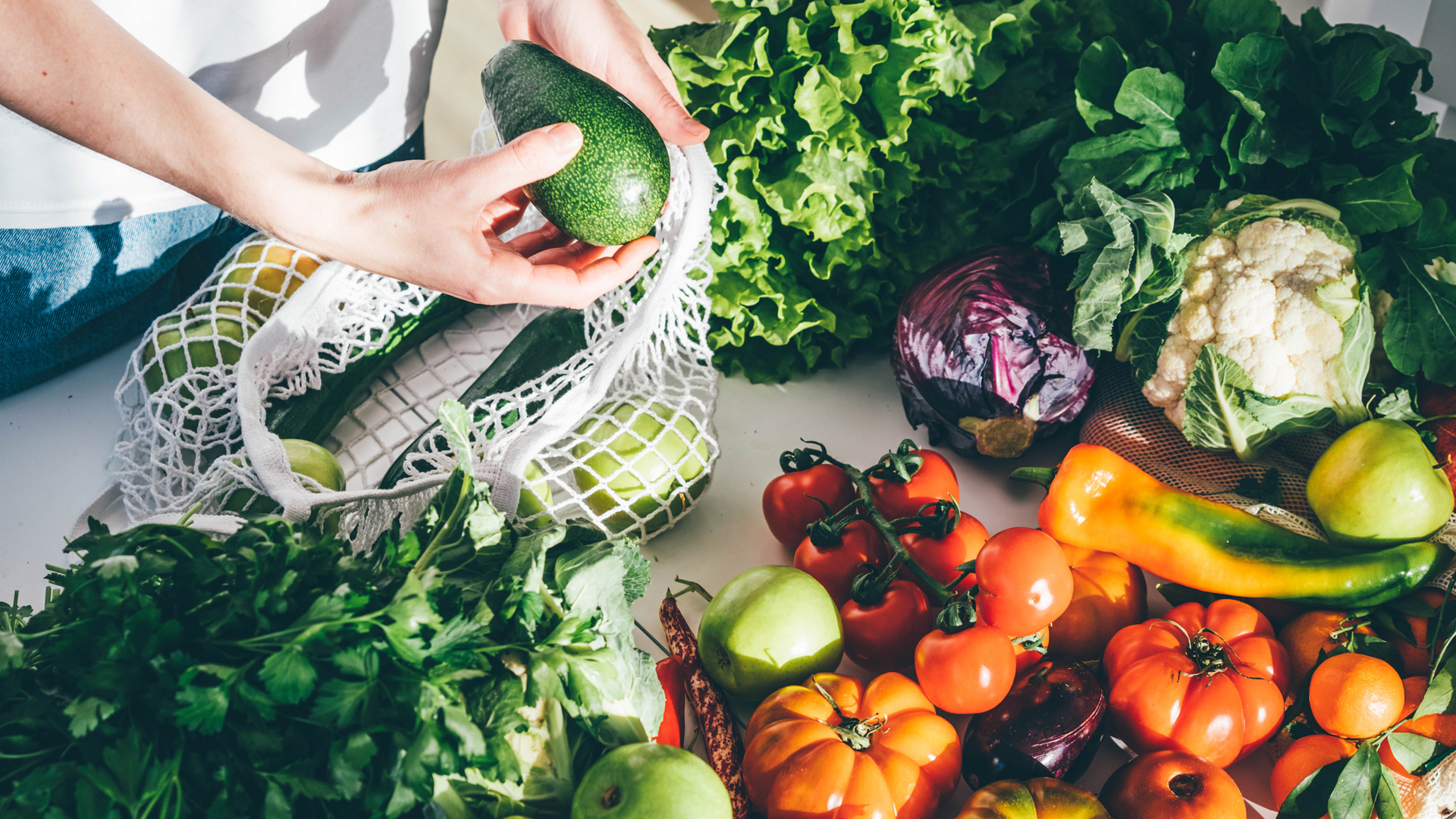What are calories?
Calories are units of energy. But how does an understanding of calories help with weight control and weight loss?

What are calories, why do we need them, and can a better understanding of calories help us maintain a healthier weight throughout our lives?
Calories are units of energy that a food or drink provides. You can usually find calorie counts listed on food items, and wearables like the best fitness trackers allow you monitor how many calories you're burning by doing different activities. Certain foods, such as fatty, fried, or processed foods, tend to have more calories. Other foods, such as fresh fruit and vegetables, tend to have fewer calories. However, some healthy fruits and vegetables can be high in calories, while low-calorie foods, such as diet soda, don’t provide any nutritional value.
We need calories to give us enough energy to move around, stay warm, grow, work, think, and play. Even our blood circulation and digestion need the energy gained from calories in order to function well.
How many calories we need each day depends on our age, whether we’re trying to lose weight, how active we are, and several other factors. In this article, we’ll be taking a look at the latest research and speaking to expert nutritionists to gain a greater understanding of calories, and why they’re so important.
The physics of calories
The term calorie has been in use since the early 19th century, when it was used to define the amount of heat required to raise the temperature of a kilogram of water from 0 degrees to 1 degree Celsius. Scientists measured that as one kilocalorie, which is where the shortening ‘kcal’ comes in. In fact, a standard calorie is made up of 1,000 small calories, or gram calories.
However, use of the term kilocalorie faded in the early 20th century, when calories became scientifically defined in terms of joules. This is why in some parts of the world, such as parts of Europe or Australia, people use the term kilojoules instead of calories. One calorie is equal to 4.2 kilojoules.
There are calories in each of the three main macronutrients that we eat – carbohydrates, fats and proteins. Each macronutrient contains the following calories per gram:
Get the world’s most fascinating discoveries delivered straight to your inbox.
- Carbohydrate: 4 calories
- Fat: 9 calories
- Protein: 4 calories
Other macronutrients, such as fiber, may differ in calorie content depending on whether it is soluble or insoluble fiber.

How many calories should you eat every day?
The Dietary Guidelines for Americans recommend women should take in around 1,600 to 2,000 calories a day, and men should take in around 2,000 to 3,000 calories a day. The less active you are, the fewer calories you’ll need. But, as the guidelines point out, the total number of calories a person needs every day can vary. It may depend on age, weight, sex, how much physical activity you do, and whether you’re pregnant or breastfeeding.
The Acceptable Macronutrient Distribution Range (AMDR) within the Dietary Guidelines for Americans details how many calories should come from carbohydrates, fats, and proteins each day, in order to receive sufficient energy and nutrition:
- Carbohydrates should make up 45% to 65%
- Fats should make up 20% to 30%
- Protein should make up 10% to 35%
These percentages are for the average person, and ratios may change for infants and young children, who need more fats in their diet.
What are high-calorie foods?
Fatty foods, such as fried foods, fatty meats, oils, butter, sugary treats, and candies are high-calorie foods. While many high-calorie foods are low in nutrients, vitamins, and minerals, there are also plenty of high-calorie foods that are surprisingly healthy.
Healthy foods that are high in calories include avocados (322 calories each), quinoa (222 calories per cup), nuts (828 calories per cup of peanuts), olive oil (119 calories per tablespoon), and, in moderation, dark chocolate (648 calories per bar), according to the USDA Nutrition Database.
What are low calorie foods?
Fruits and vegetables are usually relatively low in calories, but still provide a good source of dietary fiber. Two cups of shredded romaine lettuce or spinach have 16 calories, a large stalk of celery has 10 calories, 1 cup of broccoli has 15 calories and an orange has 70 calories, according to the USDA Nutrition Database.
What are empty calories?
Empty calorie foods are foods that have little or no nutritional value. They often have high fat or sugar content. Alcoholic drinks are considered to be empty calories.
The following foods are examples of empty calorie foods:
- Sugary drinks, including sodas, energy drinks, and fruit juices
- Cakes, cookies, donuts, muffins, and other carb-heavy desserts and snacks
- Chocolates, candies, and candy bars
- Processed meats, such as bacon and sausages
- Condiments and sauces, including ketchup and mayonnaise
- Fast foods and junk foods, including pizza, burgers, and French fries
- Solid fats, such as butter and shortening

What’s the link between calories and weight loss?
We need to strike a balance between calories in and calories out. If we put more calories in than we use up (calorie surplus), those excess calories are stored as body fat. Continuing to put more calories in than we need, will lead to excess weight.
On the flip side, eating too few calories, or burning up more energy through physical activity than we are consuming, will lead to weight loss over a period of time (calorie deficit). However, it’s important to consume enough calories to have the energy your body needs for everyday activities, as well as to stay healthy.
“There is a link between calories and weight loss,” says Kimberly Snodgrass, a registered nutritionist, and spokesperson for the Academy of Nutrition and Dietetics. “If you are trying to lose weight, it is important to monitor your calorie intake. One pound is equivalent to 3,500 calories. So, for example, if you want to lose about a pound a week, you’ll want to cut 500 calories a day from your dietary intake,” she says.
Do you need to cut calories for weight loss?
Although restricting calories can be a practical and achievable way to lose weight in the short-to-medium term, there are other longer-term approaches to weight loss that can have greater benefits to your overall health.
Increase physical activity
A regular exercise routine can help you burn up extra calories, increase your metabolism, and help you feel fitter and stronger.
Cook more meals at home
Cutting back on junk food, ready meals and over-processed foods, such as deli meat can have a huge impact. Choose lean meats, including chicken and turkey, and include lots of fruit and vegetables.
Get more sleep
According to Harvard Health, poor quality sleep over a long period of time can affect your body’s circadian rhythm, which can make you want to eat more.

What are low calorie diets?
A low-calorie diet focuses on a target intake of calories every day. It’s a good idea to talk to a doctor before embarking on a low-calorie diet, especially if you have any underlying health problems, or a history of dieting and gaining weight.
The American Academy of Family Physicians recommends that women should not eat fewer than 1,200 calories a day, and men should not restrict themselves to fewer than 1,800 calories a day. Very low-calorie diets are sometimes recommended for people with obesity who are due to undergo surgery or people with diabetes. Calories are severely restricted for a short period, to around 800-1,000 calories a day.
Although low-calorie diets can be effective in the short term, they are difficult to sustain over long periods. According to Dr Richard Allison, a registered dietician for Herbalife Nutrition, they can even be dangerous. “Low-calorie diets are not sustainable in the long term, as your body risks going into starvation mode, which holds a number of risks,” he says.
Instead, Allison recommends considering nutrition density when choosing meals and snacks.
“When choosing between two food items with the same calorie amount, one food choice can provide your body with important nutrients like protein, fiber, healthy fats, vitamins, and minerals we need every day. Another option may provide calories only from sugar and saturated fat, and with no other significant nutritional benefits,” he says.
Even snacks are important, says Allison, in ensuring you’re getting the right nutrition for your body to function healthily. “Look for products with a high amount of protein, vitamin A and D, calcium and fiber, and a low amount of sugar, saturated fat, and sodium. As for calorie count – a healthy snack should be 100-150 calories to prevent hunger and maintain satiety before the next meal.”
What's the best way to lose weight by counting calories?
The Centers for Disease Control and Prevention recommends a healthy balance of calories in versus calories out. It suggests keeping a daily food diary and working out the calories of what you’re eating every day. Next, keep a note of any physical activity, and the length of time you do it.
The following tips can help to work out how many calories you’re eating, and expending:
- Check the nutrition facts label on packaged foods for a calorie count on servings or portions.
- Find an online calculator to help you work out how many calories are in other foods you eat, such as fruit and veg. The USDA Nutrition Database has calorie counts on thousands of foods, and you can filter by portion size or other measurements.
- Find an exercise activity calculator that tells you how many calories you’re using during physical activity. The American Cancer Society has a quick and easy guide on lots of physical activities, from cleaning to playing tennis.
If your diary shows that you’re taking in more calories than you can use up, look at your diet, or your physical activity, to see where you can swap in healthier food options, or do more regular exercise.
Additional resources
Joanne Lewsley is a UK-based freelance writer and editor, covering health and lifestyle news and features. She mainly creates evidence-based health and parenting content and has worked with a number of global sites, including BabyCentre UK, Medical News Today, Fit & Well, Top Ten Reviews, and Yahoo!



